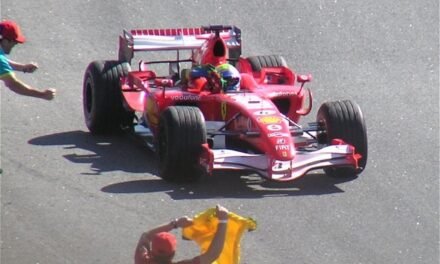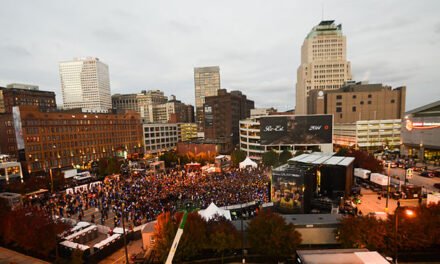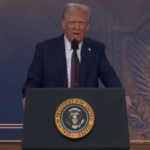The 150th Preakness Stakes tore through Baltimore’s Pimlico Race Course yesterday, with Journalism charging to victory and claiming the $2 million prize. The stands buzzed with fans in floppy hats and sharp blazers, sipping cocktails and hollering as hooves pounded the dirt. But this year’s race, one of America’s wildest sporting spectacles, wasn’t just about fast horses. It held up a mirror to an economy wrestling with tight wallets, sky-high bets, and a city pinning big hopes on a sport that’s struggling to stay in the black.
Baltimore counts on the Preakness to bring in serious cash. Back in 2014, the state figured it pumped $31.4 million into the local economy, with 123,000 fans splurging on hotels, crab cakes, and souvenirs. This time around, though, only about 44,000 showed up—down from 46,000 last year and a steep drop from the 131,000 who crammed Pimlico in 2019. It’s not just Baltimore. The Kentucky Derby saw 150,000 fans this year, a far cry from its 170,000 peak a decade ago. Bill Carstanjen, who runs Churchill Downs, told the Lexington Herald that folks are holding back, spooked by President Trump’s new tariffs. Those levies, rolled out on April 2, have sent shockwaves—stocks tanked, McDonald’s sales dipped, and the International Monetary Fund’s whispering about a global recession.
The tariffs are hitting Pimlico, too. Maryland’s planning a $500 million state-funded overhaul of the track, kicking off after this race, to spruce it up and add a new training center. But the Maryland Stadium Authority told the BBC that tariff-driven price hikes on steel and other materials could mess with the budget. Nobody’s sure how bad yet, but it’s got locals nervous. If costs balloon, the 2026 Preakness might move to Laurel Park, a shift that could dent Baltimore’s take-home from the race.
Even with fewer folks in the stands, betting went through the roof. A week before the race, $348,000 poured into Preakness futures, smashing last year’s $260,000, and millions more were wagered by the time Journalism crossed the finish line. That’s got some economists worried. Justin Balthrop, who teaches at the University of Kentucky, told the Israel Mirror it’s a sign of desperation. “When times get tough, people chase big risks, hoping for a quick fix,” he said. It’s like the gambling spike at the Derby—folks feeling the pinch are rolling the dice, looking for a way out of their financial blues.
Maryland’s going all-in to keep the Preakness a star. The state’s coughing up $400 million to rebuild Pimlico and another $100 million for that training center, hoping to lock the race in Baltimore for good. There’s a hitch, though: the new operator, the Maryland Thoroughbred Racetrack Operating Authority, has to pay The Stronach Group, who used to run Pimlico, $5 million a year to keep the Preakness going. Hayes Gardner at The Baltimore Banner called it a “money-loser,” and he’s not wrong—the race has been bleeding cash despite its glamour. Sports economist Raymond Sauer, who owns part of a racing stable, loves the sport but told the Banner he’d nix these subsidies. They don’t create jobs or taxes like boosters claim, he says.
Other experts back him up. Dennis Coates, an economist at the University of Maryland, Baltimore County, told the Banner the Preakness doesn’t really move the needle on jobs or income. Fans dropping $69 for infield tickets or $200 on a fancy suit aren’t bringing new money to town—they’re just spending what they’d have dropped at a bar or the mall. A 2019 city report hyped a revamped Pimlico as a $50 million economic boost, but Coates calls that wishful thinking. It’s the “substitution effect”: money just shuffles around, not grows.
You could feel the economic split in the crowd. Up in the fancy tents, big spenders clinked glasses of Black-eyed Susans, while down in the infield, guys like Anthony Walker, a Baltimore local, shelled out $20 for a beer, chasing a break from everyday stress. Over on social media, folks called the Preakness a “vibe check” for the economy—one user said the betting boom screams trouble, another saw it as Maryland’s heart beating strong. The mix of people, from Derby diehards in lucky socks to first-timers tossing $5 on a horse, made it feel like one of the few places where everyone’s on the same page, even if their bank accounts aren’t.
What’s next for the Preakness? Moving to Laurel in 2026 could shake things up, especially if tariffs keep squeezing budgets. Maryland’s $500 million bet on Pimlico is a long shot to spark a big economic win, and skeptics like Sauer think the money’s better spent elsewhere. For now, the race is still a loud, messy reflection of where America’s at—folks betting big, spending carefully, and hoping for a comeback. Whether Baltimore’s investment pays off, or tariffs and empty seats steal the show, we’ll find out when the horses run again.


















